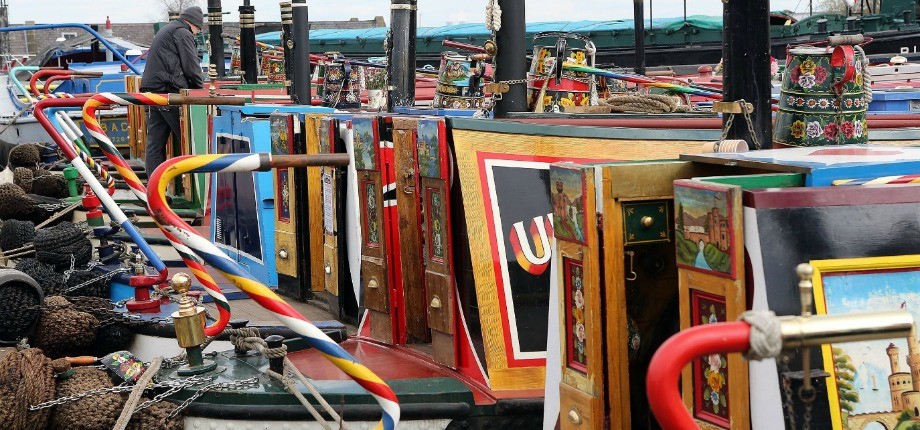Stay in touch with the latest news from AIM and get information on sector grants, jobs and events with our free fortnightly E-News.
The Canal and River Trust

In 2015, the Canal and River Trust museums were emerging from a long period without a clear direction and when under-investment had been a sustained problem. Gaining provisional accreditation was a step forward but the Trust, which runs the museums at Ellesmere Port and Gloucester, needed to be clear on the vision and future direction for the museums in order to be able to write a forward plan that met the needs of full accreditation standards.
They applied to AIM for a grant under the Hallmarks programme for external assistance with examining and clarifying their vision and writing the forward plan. They were given a grant to work with Cultural Consulting Network, using the AIM Hallmarks as a framework for discussion.
After initial discussion it soon became clear that their needs were wider than ticking the boxes for accreditation and that a focus on the Purpose Hallmark could give much needed clarity to the organisation: ‘know, articulate and embrace your purpose’. For many years, through change of ownership and governance, the museums had lost the early vision which had guided development as different priorities came to bear.
“We realised that we had to do some deeper development work and formulate a more strategic view of what our focus and aims were,” says Margaret Harrison, the Trust’s Collections Manager.
“The team from Cultural Consulting Network worked with us over several months. They met with the museum management team, museum staff and volunteers. They held meetings with wider teams with the Trust, particularly fundraising and senior management, including the Director of Customer Care and the Chief Executive. They also carried our research and consulted with other independent museums and local organisations.”
Part of the challenge for both museums was that “nobody had properly identified the real reason for their existence,” Margaret says. If the museum had a clear purpose, as the AIM Hallmarks recommend, then the organisation could remain on course despite changes imposed by outside forces.
“Both Ellesmere Port and Gloucester had become very run-down. The fundamental problem was that there was a huge collection of 68 boats all of which had been kept on the basis that people were going to take them out around the canal network. But it was just undoable and, instead, lots of them were sitting in the canals rotting away.” It was a perfect metaphor for how thinking about the museums’ purpose had stalled.
The Hallmark relating to Collections states that an organisation should understand the purpose of the Collection, and the consultants helped staff to understand how the Collection fitted into a wider development picture.
“When the museum was set up and lots of different Trusts were involved, they thought they were there to operate boats but we needed to concentrate on our rationale as a museum which is a completely different thing to being an organisation which operates boats,” Margaret says.
The team from CCN considered all the options for both museums, including whether to retain both museums, where to put the focus for investment and even opening a new museum.
One of the Hallmarks relates to innovation and CCN advocated quite a radical solution for the museums, the conclusion was that Ellesmere Port should be the focus for a major, ambitious redevelopment, as it is a significant historic site with greater potential, with the option that Gloucester could be developed as a regional hub for the Trust with less focus on visitor engagement.
They are now planning a bid to the HLF Resilience Fund for a bigger piece of strategic work on the development options for the site.
There is much more focus on visitor engagement, one of the other Hallmarks, the Trust wants to understand what visitors need from open air sites such as Ellesmere Port and reflect their increasingly sophisticated needs. CCN also recommended, bearing in mind the Awareness and Networks Hallmark, that the museums should establish an advisory group to create strong links with other museum professionals and to ease the isolation that is possible for a museum team when they are part of a much larger organisation that is not concerned with running museums. That advisory group has been established
“The work to define our purpose goes on but this process has moved us forward,” Margaret says. “Through the workshops and options appraisal, we now have a lot more buy-in from staff and volunteers for the idea of being a museum and considering what we exist for.”
